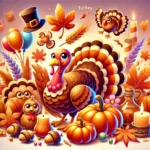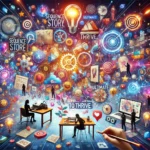Introduction
When it comes to iconic first-person shooters, Counter-Strike 1.6 (2003) stands out as a cultural milestone. Known for its tactical gameplay and strategic depth, the game also introduced a visual language that helped define the experience. Counter-Strike 1.6 (2003) game icons banners played a crucial role in shaping both the gameplay and the overall player experience. From weapon icons to team logos, these visual elements not only enhanced immersion but also became a defining aspect of the game’s legacy.
In this article, we’ll explore the origins, significance, and lasting impact of these game icons and banners, showing how they continue to influence modern gaming design. We’ll also delve into how the community, through customization and modding, contributed to the evolution of these icons.
The Origins and Design Philosophy of Counter-Strike 1.6 Icons and Banners
The design of Counter-Strike 1.6 (2003) game icons banners can be traced back to a time when simplicity was key in ensuring smooth gameplay and easy recognition during fast-paced matches. Developed by Minh Le and Jess Cliffe, Counter-Strike started as a mod for Half-Life but quickly became a standalone game. In the early 2000s, design limitations pushed developers to focus on clarity and functionality. Icons needed to be instantly recognizable at a glance, especially in intense firefights where split-second decisions mattered.
For example, weapon icons like the AK-47, Desert Eagle, and M4A1 were designed with minimal detail but maximum impact, making them easily identifiable on the game’s Heads-Up Display (HUD). The icons weren’t just decoration; they served a functional purpose, giving players the ability to quickly switch weapons or strategize based on team composition.
Key Weapon Icons and Their Importance in Gameplay
Weapons in Counter-Strike 1.6 (2003) were more than just tools for combat—they became symbols of individual playstyle and team strategy. Iconic weapons like the AWP sniper rifle and the AK-47 each had their own unique icon that players could recognize in an instant. These weapon icons were integral to the gameplay, as players needed to know what they were wielding and what their teammates or enemies were equipped with at a glance.
For example, the AWP’s icon became synonymous with precision and power, as this weapon could take out enemies with a single shot. On the other hand, the AK-47’s icon was associated with versatility, as the weapon became a favorite for terrorists due to its balance of power and accuracy. The simple yet effective design of these icons allowed players to strategize on the fly, especially when identifying the type of weaponry their opponents had picked up.
Player Rank Icons: Visualizing Progression and Skill
Beyond weapons, the player rank icons in Counter-Strike 1.6 were also crucial in visualizing a player’s skill level and progress. These icons helped differentiate beginners from seasoned veterans, adding another layer of strategy to the game. Seeing a high-rank icon next to an opponent’s name would signal a challenging match, whereas a lower rank indicated an opportunity for tactical dominance.
The progression of rank icons—ranging from Silver to the prestigious Global Elite—became a badge of honor. These icons served not only as a visual representation of skill but also as motivation for players to improve their performance. They added a competitive edge to the game, encouraging players to rank up and achieve greater in-game status.
The Role of Team Logos and Their Influence on Team Spirit
Team logos, displayed prominently on Counter-Strike 1.6 banners, fostered a strong sense of community and team spirit. Whether in competitive play or casual matches, banners allowed players to display their team’s identity. Teams would customize their banners, creating unique logos that represented their group’s style and approach to the game.
The Counter-Terrorist (CT) and Terrorist (T) logos became instantly recognizable, symbolizing the tactical divide between the two teams. The CT logo often featured blue or gray shields, representing defense, while the T logo was characterized by bold red or darker tones, symbolizing offense. These logos, paired with team-specific banners, helped build a visual identity for each faction, making the game’s strategic aspect even more immersive.
How Icons and Banners Enhance Player Experience and Communication
Icons and banners in Counter-Strike 1.6 (2003) weren’t just for aesthetic purposes—they played a vital role in enhancing communication between players. The weapon icons, HUD elements, and in-game banners provided essential information during fast-paced moments. Knowing which weapon was equipped or what rank an opposing player held could change the course of a round.
For example, the quick identification of weapon icons allowed players to make fast decisions about which guns to pick up or avoid. Similarly, banners helped organize teams, especially during clan matches and tournaments. They gave players a sense of belonging and helped them strategize more effectively, with visual elements guiding communication in the heat of battle.
Icon Customization and Modding Community’s Role in Counter-Strike 1.6
One of the reasons Counter-Strike 1.6 (2003) has remained relevant over the years is due to its strong modding community. Modders have created custom icons and banners, offering players a way to personalize their game experience. These custom icons often went beyond the traditional in-game visuals, giving players the ability to tailor their HUD, team logos, and even weapon designs to their liking.
The modding community added layers of creativity to the game, keeping the visuals fresh while preserving the core identity of Counter-Strike 1.6 game icons banners. From player-designed weapon icons to clan-specific banners, the customization options were endless, allowing players to feel a deeper connection to the game.
The Impact of Map Icons on Navigation and Strategy
Map icons in Counter-Strike 1.6 were another important element that helped players navigate and strategize. Maps like Dust 2, Inferno, and Nuke became iconic not just for their layout but for their recognizable icons, which represented key locations. These icons helped players orient themselves quickly during rounds, allowing them to plan out attacks or defenses with greater precision.
For instance, the bombsite icons were crucial in bomb defusal modes, guiding terrorists and counter-terrorists to the objective. Knowing the layout and being able to quickly identify map locations via icons became an essential part of successful strategy, reinforcing the importance of visual cues in the game’s overall design.
The Legacy of Counter-Strike 1.6 Icons and Their Influence on Modern FPS Games
The design philosophy of Counter-Strike 1.6 (2003) game icons banners has influenced many modern FPS games. The clear, functional design of weapon icons, player ranks, and team logos has been adopted by newer titles in the genre. Games like Call of Duty, Valorant, and Rainbow Six Siege have drawn inspiration from Counter-Strike’s minimalist yet effective use of icons and banners.
This legacy proves that the right visual elements can significantly enhance gameplay, communication, and player engagement. The icons and banners in Counter-Strike 1.6 weren’t just a design choice—they were a strategic tool that players relied on, making them an integral part of the game’s enduring success.
Conclusion
The legacy of Counter-Strike 1.6 (2003) game icons banners continues to resonate in modern gaming, proving that well-designed visuals play an essential role in player experience. From weapon icons that offer clarity during firefights to rank symbols that drive competition, these elements have become iconic in the gaming world. The influence of these design choices, supported by a strong modding community and the game’s lasting appeal, ensures that the visual language of Counter-Strike 1.6 will remain relevant for years to come.
As gaming continues to evolve, the thoughtful integration of icons and banners will remain a cornerstone of effective game design, and Counter-Strike 1.6 will continue to serve as a benchmark for how to do it right.

